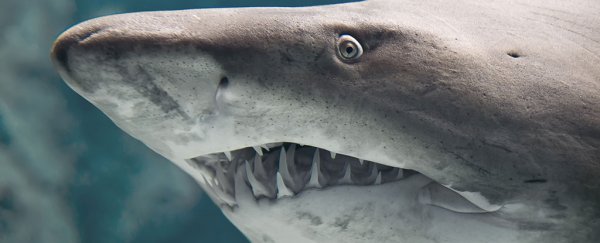A clear, internal jelly that helps sharks and other marine animals detect the electrical signals of their prey offers the highest proton conductivity in the natural world, according to a new study.
The jelly in question is found in the 'ampullae of Lorenzini' (AoL) – an array of electrosensory organs present in cartilaginous fish such as sharks, skates, and rays. While scientists have known about the ampullae of Lorenzini for centuries, the remarkable conductivity of the jelly-like substance inside has come as a surprise, and it could even lead to new technological applications for the biological material.
"The observation of high proton conductivity in the jelly is very exciting," said materials scientist and electrical engineer Marco Rolandi from the University of Washington. "We hope that our findings may contribute to future studies of the electrosensing function of the ampullae of Lorenzini and of the organ overall, which is itself rather exceptional."
The ampullae of Lorenzini are visible on the heads and underside of elasmobranchs – a sub-class of cartilaginous fish – as small pores on the surface of the skin (you can see them in the shark image above).
These surface pores are connected to electrosensory cells by canals filled with clear, viscous jelly, which let the fish detect weak electrical fields emitted by other animals in the sea - even signals as subtle as 5 nanovolts per centimetre.
To measure the conductivity of the jelly, the researchers extracted it from skates and sharks. While the researchers don't yet fully understand how the jelly contributes to this function, it's clear that it plays some role, thanks to its immense capacity for proton conductivity, which the team says is the highest ever reported for a biological material.
At approximately 2 ± 1 millisiemens per centimetre, the jelly's conductivity is only 40 times lower than the polymer Nafion, a synthetic material known for its superior conductivity.
Proton conductivity is a form of electrical conductivity where positive hydrogen ions carry the charge, as opposed to electrons. While electrons carry the charge in highly conductive metals such as silver and copper, proton conductivity is an important process in powering photosynthesis, and could be used to build better batteries and fuel cells in the future.
"The first time I measured the proton conductivity of the jelly, I was really surprised," said one of the team, Erik Josberger. "I didn't expect a natural material to approach the proton conductivity of an engineered material like Nafion."
So what is it about the substance that gives it its awesome conductivity?
"We suggest that keratan sulfate, identified previously in the AoL jelly and confirmed here, may contribute to the high proton conductivity of the AoL jelly with its sulfate groups – acid groups and proton donors," the authors write in Science Advances.
The scientists hope that further study of the jelly will help us understand more about its remarkable properties, and they suggest that the material – if we're able to replicate a synthetic version of it – could even find a home in new technologies, perhaps in the form of some kind of unconventional sensor device.
"Given that Nafion is a very carefully prepared material that's very precisely made, it was interesting to see the shark had replicated something very close to that material just by nature," Josberger told Sarah Kaplan at The Washington Post, explaining how there's still much we don't know about how this jelly and the ampullae of Lorenzini work.
"I always say, if you have all the answers, then we're out of a job," added Rolandi. "So it's rather exciting that we're creating new questions rather than all the answers."
H/t: The Washington Post
